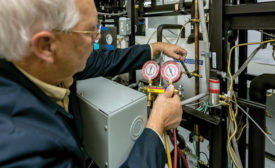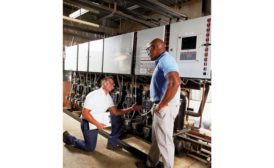Home » refrigeration service
Articles Tagged with ''refrigeration service''
HFO Sightings: Refrigerant Retrofits Becoming More Common in Supermarkets
Best practices help ensure supermarket transitions to low-GWP blends go smoothly
Read More
Diagnosing Refrigeration Restrictions: Similar Symptoms With Different Causes
Problems can occur in both the low and high sides of the system
Read More
Supermarkets in the Market for New, Advanced IoT Solutions
New options can improve refrigeration performance and reduce downtime
Read More
Five Secrets to Being a GREAT Boss
Workplace challenges got you down? Elevate your company by inspiring trust and respect
Read More
Refrigerant Migration: Dangerous But Preventable
Keep the oil warm and consider pump down to prevent compressor damage
Read More
Copyright ©2024. All Rights Reserved BNP Media.
Design, CMS, Hosting & Web Development :: ePublishing








